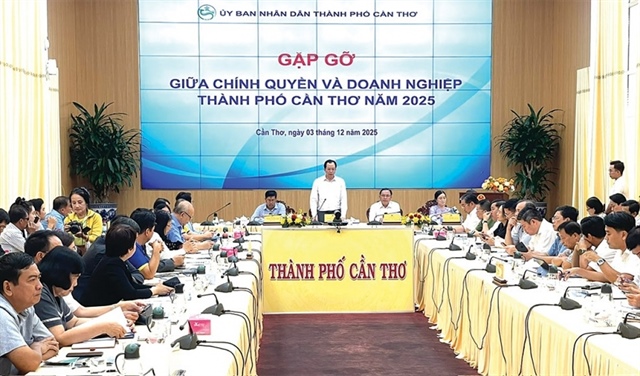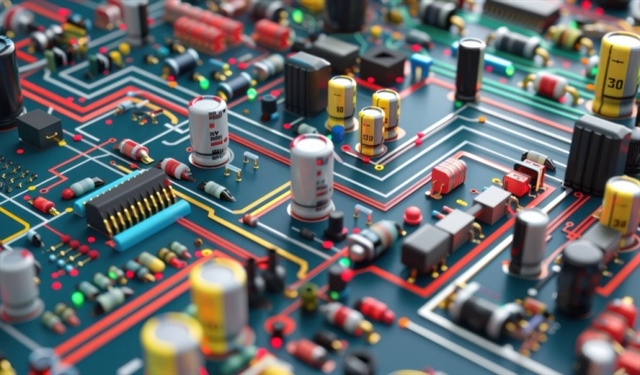Successes in reach despite trade war
Successes in reach despite trade war
The ongoing trade dispute between the United States and China is expected to reshape the highly-open ASEAN region through 2019, while also helping to promote Vietnam as the world’s next manufacturing hub. Dr Chua Hak Bin, senior economist at Maybank Kim Eng in Singapore, discusses the possibilities.
Major themes in 2019 that will drive the ASEAN’s markets and outlook include the US-China trade war; rate hikes from the US Federal Reserve and tightening global monetary conditions; and a wild card including global attacks on digital companies. Upsides could come from a trade peace deal between the two major trading powers, or a pause in the Fed’s rate hike cycle. We see some chance of a ceasefire on tariffs, but the trade spat will continue broadening to non-tariff barriers, for example on export controls.
The US-China trade war is disrupting global and electronics supply chains, which are centred on China with extensive links to Northeast Asia, Singapore and Malaysia. Disruption to trade may intensify in early 2019 if this tariff dispute escalates, tipping manufacturing into a contraction.
For the ASEAN, exports to China and US account for about 14 per cent and 11 per cent of total exports, respectively, their two largest markets. Most models show that the ASEAN will benefit over the longer-term from diversion, but the region’s net gains are far smaller than China’s loss from the trade war. Trade disruption is first order, in terms of the magnitude of impact on growth. Trade and investment diversion is second order.
Companies need time to shift their production arrangements and set up new plants to optimise against higher American and Chinese tariffs. Companies will increasingly adopt a more flexible production network, for example a so-called China+1 strategy, to circumvent higher US tariffs. The existing China-centred supply chain network will gradually break up and become more dispersed across Asia.
This stand-off will divert trade and investment via third countries, including the ASEAN, to circumvent the high tariff walls. Some ASEAN member states, particularly Vietnam, Thailand, Cambodia and Malaysia, may benefit as multinational companies and Chinese investors build new plants and expand capacity. A recent American Chamber of Commerce survey showed that 18.5 per cent of around 420 US companies in China plan to relocate their manufacturing facilities to the ASEAN. Industries in consumer products, industrial, technology and telecoms hardware, automotives, and chemicals have indicated interest in the ASEAN region.
For the last few months we have already seen early signs of foreign investment picking up in this region. Vietnam appears to be capturing the lion’s share of the shifting supply chains and is often cited as a production alternative to its northern neighbour.
Recent pushes for greater free trade pacts, including the recent Comprehensive and Progressive Trans-Pacific Partnership (CPTPP), may give some ASEAN members an advantage to attract foreign direct investment and benefit from the shifts in the supply chain. The CPTPP will give countries greater access to large markets, such as Japan, Canada and Australia. The China-led Regional Comprehensive Economic Agreement (RCEP) is still under negotiation but may be concluded in 2019, which will also support the supply chain shift towards the ASEAN.
Deflationary and rate hike pressures
The US-China trade war may be inflationary for the Americans because of higher tariffs, but will be deflationary for third countries. First, the Chinese yuan depreciation will reduce the prices of Chinese-made goods. Imports from there account for about 20 per cent of ASEAN total imports.
Second, the dispute will divert excess supply to third countries. For example, Indonesia and Vietnam are accusing China of dumping steel, while India is accusing them of dumping solar panels. Thailand is importing and benefiting from plunging US soybean prices.
A large proportion of the ASEAN’s consumer goods are from China. For example, more than half of Indonesia’s imports of household washing machines and seats are from China, both of which are subject to higher US tariffs. China’s tariff hikes on US agricultural products, such as soybean and fruits, may also result in higher ASEAN imports and lower US prices.
Generally speaking, the ASEAN as a whole will face tighter global financial conditions, with the Fed expected to continue with its rate hike cycle. Our view is that the Fed is on track to normalise and hike three more times in 2019, even in the face of slowing US growth, but instigate a pause by late 2019 and in 2020. A possible Fed pause in late 2019 is bullish for an emerging Asia.
Most ASEAN central banks started tightening and normalising policy rates in 2018, with the exception of Thailand and Vietnam. This coming year, we think “current account deficit” countries will be under more pressure to tighten than “current account surplus” countries, such as Vietnam. We expect the deficit countries, Indonesia and the Philippines, to continue tightening but at a more modest pace compared to 2018, to manage currency pressures as the Fed tightens. We are pencilling in a token Bank of Thailand rate hike to contain financial stability risks from overly-low policy rates. We expect both Singapore and Malaysia to remain on hold next year, as growth falls below potential and inflation eases. Vietnam’s policy rates are also likely to remain the same.
Tighter focus on tech firms
A notable wild card in 2019 is the intensifying global backlash against giant tech firms. Issues such as data privacy, tax evasion, cyber-security and a US-China tech war is triggering a regulatory and tax wave. Tech titans such as Google and Facebook have been slapped with huge fines for anti-trust and data breaches. Investments in the US and Europe from Chinese tech firms are facing greater scrutiny and vetting. Many countries, including ASEAN members, are looking to tax e-commerce, focusing on the big tech players.
All across the ASEAN, tightening regulations are being introduced. Indonesia is introducing e-commerce rules in 2019, in which online merchants may be required to disclose their audited financial reports and foreign players may have to incorporate local entities for tax purposes. In 2018, Vietnam also drafted a cybersecurity law that requires internet companies such as Facebook and Google to store Vietnamese-based user data on servers within the country.
Similarly, Malaysia introduced a digital tax on services in its 2019 budget. Imported business-to-business online services will be taxed. Foreign service providers of software, music, video and digital advertising will be required to register with customs and remit the Services Tax.
Overall, amid the backdrop of volatile global conditions, our investment strategy team is upbeat about Vietnam, which is structurally positive on growth potential, particularly infrastructure spending. Vietnam is also likely to a great beneficiary of the changing regional supply chain, and its market is set to open up further over the following year.



















